Dressage Judging – A history
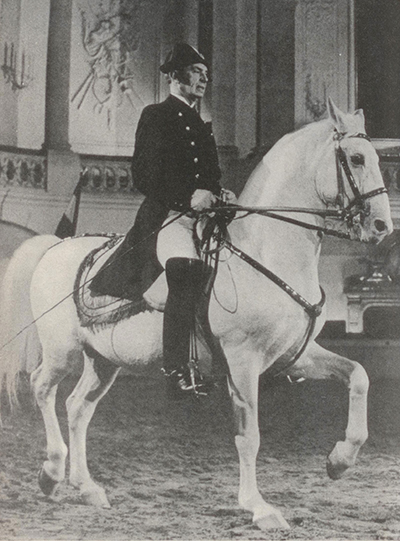
According to Alois Podhajsky in his The Art of Dressage – Basic Principles of Riding & Judging, dressage tests originated in Austria, although the great man, Olympic medallist and head of the Spanish School in Vienna, did not like the term, dressage. He complained ‘The term dressage is not too happy a one, for it suggests something like the drilling of a poodle, that is, the very opposite to what is expected from training a horse according to the principles of classical horsemanship. But since the term has become the international one for this kind of riding, we must accept it.’
Since this book is long out of print and generally unavailable, I will quote extensively, so that the wisdom is not lost…
These first dressage tests consisted of a preliminary and a principal test.
“In the preliminary test the competitors in turn rode upon command a program composed by one of the judges shortly before. A jury consisting of one to three judges evaluated the performance and decided the placements of the contestants. In the principal test, which was ridden on the show grounds before the public, all riders had to present their horses in a group and upon command. This presentation in a group gave an opportunity to watch the behaviour of the horses under varied conditions and afforded a comparison of the performances of the different riders.”
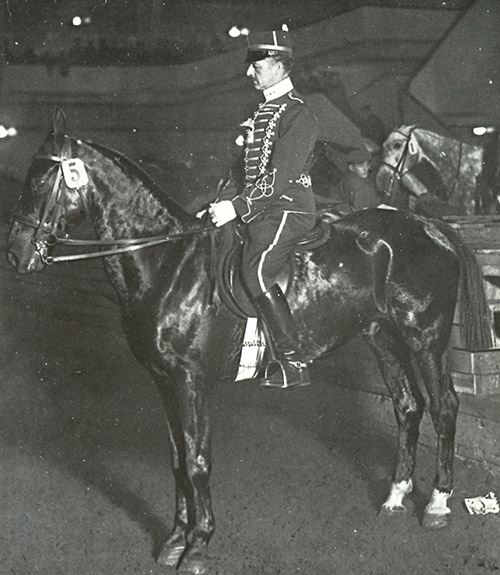
Gold at the 1912 Games to Captain Count Bondé and Emperor (Sweden)
One early decision was whether to use combined or separate judging. Combined, the judges all sat at one table, and came to a score together. The president would dictate to his secretary remarks about the rider’s performance and training advice. Podhajsky was again the sceptic:
“It cannot be emphasized too often that the records must be clear, comprehensible, and unequivocal in order to fulfill their purpose as a guideline for the rider. It frequently happens, however that the records are nothing more than a maze of complicated technical terms and pompous phrases which are no use to the rider and only confuse him.”
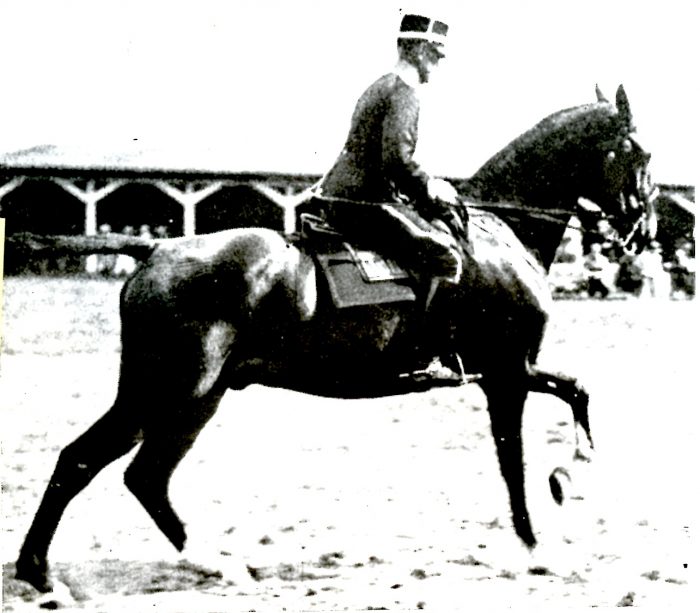
It’s gold to the Swedes again, this time Antwerp in 1920 – Captain Lundblad and Uno
Writing in 1974, the Colonel obviously had an uncanny ability to look into the future… And of course the fence-sitters were always with us:
“There are faint-hearted judges who never venture beyond the marks of five and six. This leads to the obvious conclusion that these judges lack equestrian knowledge or the courage of their opinion. Or both.”
Here we see how we have progressed over the past 50 years, our faint-hearted ones tend to go 6.5 to 7!
story continues below the advertisement
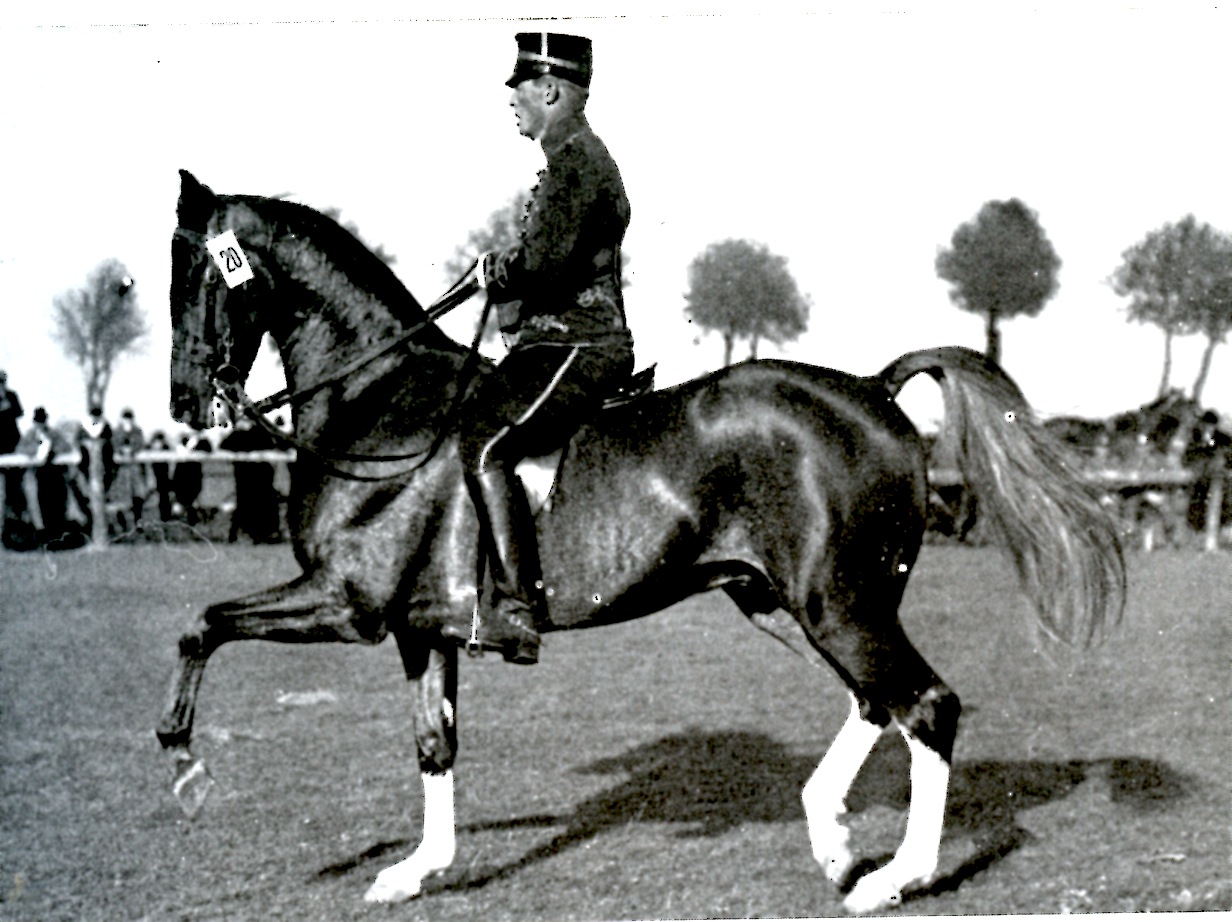 This is an interesting look – Lieutenant Sandström and Sabel – silver in 1920 and 1924
This is an interesting look – Lieutenant Sandström and Sabel – silver in 1920 and 1924
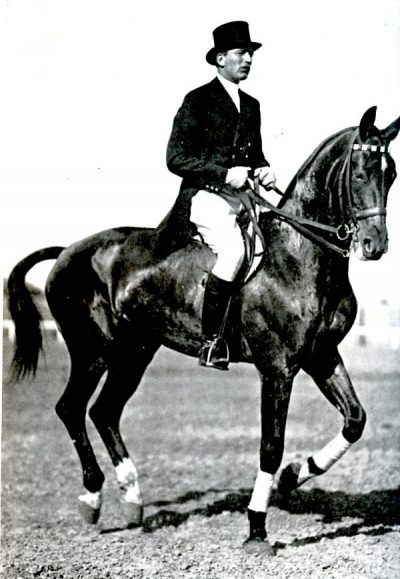
And gold for Germany’s Baron von Langen on Draufgänger at Amsterdam in 1928 –
the German team also won gold for the first time
The issue of whether the judges’ scores should be revealed to the spectators also has a long long history:
“As early as the beginning of the thirties at the conference in Paris, the Austrian representative to the FEI, General von Pongracz, proposed the method of open judging with the scores made public immediately after each ride. A similar system was already in use in skating competitions. General von Pongracz had been an active rider from his earliest youth into advanced age. Well-known in international jumping competitions, he had won the record for the high jump in 1913. In 1936 in Berlin at the age of seventy-two, he placed sixteenth in a field of twenty-nine riders.”
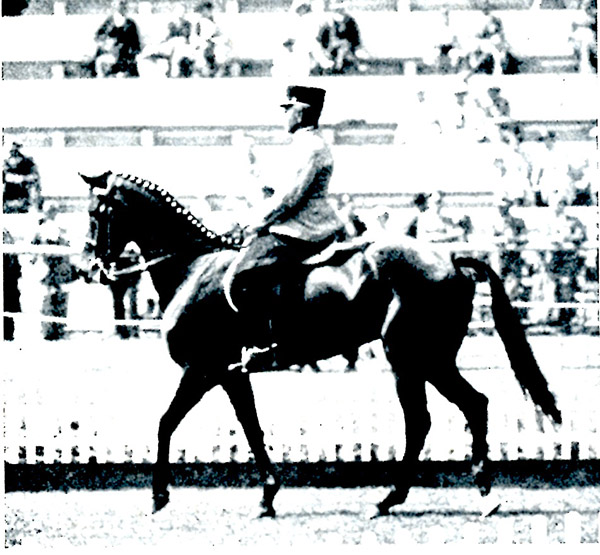
Riding at the Berlin Games in his 72nd year, General von Pongracz and Georgine
“Repeatedly General von Pongracz brought his suggestion up before the assembled members of the FEI. Finally it was turned down with the explanation that in case of erroneous judgement there might be demonstrations of displeasure from the public which would be detrimental to the sport of riding. The General was not the man to be put off with such shabby excuses. He declared in his stentorian voice: ‘The rider stands in the spotlight of public opinion. And so does the judge. The public has a right to express its opinion about any bad behaviour of a rider. In the same way it may stand up against an obviously unjust decision from a judge. In such cases it is of no interest whether the misjudgement springs from a lack of knowledge or from a weak character. A judge like that should be eliminated from the jury.’”
And Podhajsky was a visionary:
“The system of separate judging as practised in Munich in 1972, did not quite meet expectations. The results – the sum of forty-two marks – were made known after each rider had completed his test. Nevertheless, from the mere publication of the results very few spectators were able to obtain a clear picture of how these results were reached or to assess the attitudes of the judges towards the principles of classical horsemanship and the regulations of the FEI. With our highly developed technology, however, it should be possible to announce the marks for the various groups of exercises publicly and immediately by way of luminous digits. Instead of putting down the marks on a test sheet the judge should make them visible on a large board by pressing the appropriate electric button.”
It seems that the controversy was always with the sport:
“The verdicts in dressage tests – at the Olympic Games, or in other international or national events – have in most cases through the years been unsatisfactory and sometimes even downright unavailing. Thereby misunderstanding between rider and judge has sprung up and the gap has deepened ever since. The general public in most instances cannot follow the judge’s ideas either.”
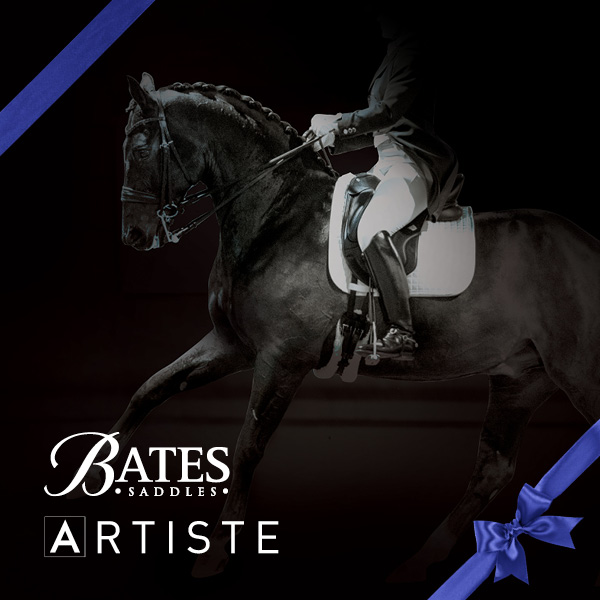
Up until the 1936 Games, the tests were called and interpreters provided, however this was changed for Berlin and the riders had to ride from memory. It was not an unmixed blessing according to Podhajsky:
“Learning the test by heart causes the rider to repeat it far too often during training. This may easily lead to mechanizing his horse, a dangerous direction for a rider to take and one that must be condemned from the point of view of serious schooling.”
But he liked the new test: “The requirements of the dressage riders were increased from one Olympics to the next and reached a climax in the 1936 Games when movements of Haute École such as pirouettes, flying changes at each stride, piaffe, and passage were included in the program. I want to underline particularly that this dressage test did justice to the principles of classical riding in every respect, allowing sufficient space for the basic requirements expected from a dressage horse such as the purity of the paces, impulsion, suppleness and so on.”
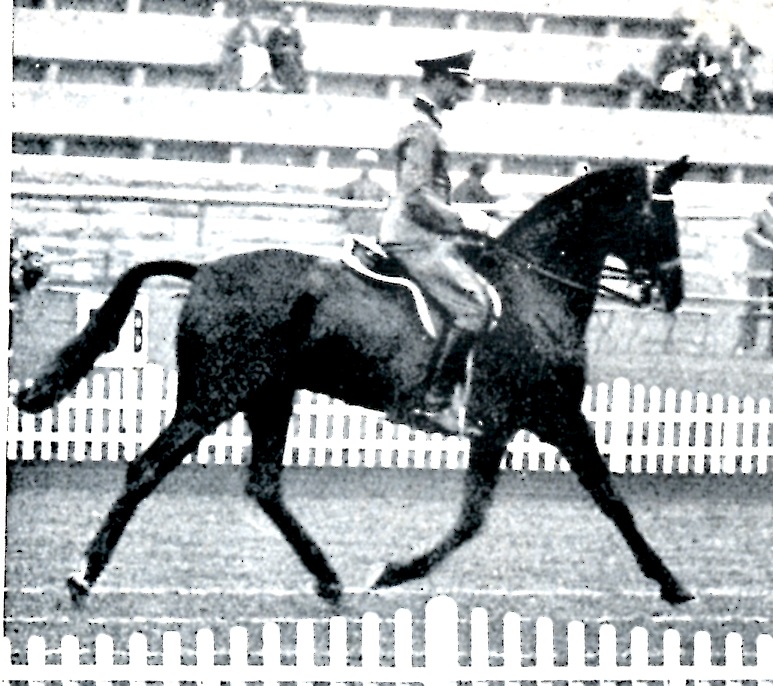
Gold in 1936 to Oberleutnant H. Polley and Kronos from Gustav Rau’s book, Die Reitkunst der Welt an den Olympischen Spielen 1936. Rau’s note on the extended trot reads: ‘ High degree of energy. Complete equilibrium of the horse. Full harmony between rider and horse.
“It should be mentioned especially that the rider was to guide his horse with the reins in one hand during some of the exercises…. There was an artistic concept in the lay-out of the different exercises. They succeeded each other in harmonious sequence from which no tension might arise and which at the same time offered the judge opportunity to examine thoroughly the standard of horse and rider. It is small wonder that even years afterward experts still stated that the dressage test of the Olympic Games of 1936 was the best designed so far.”
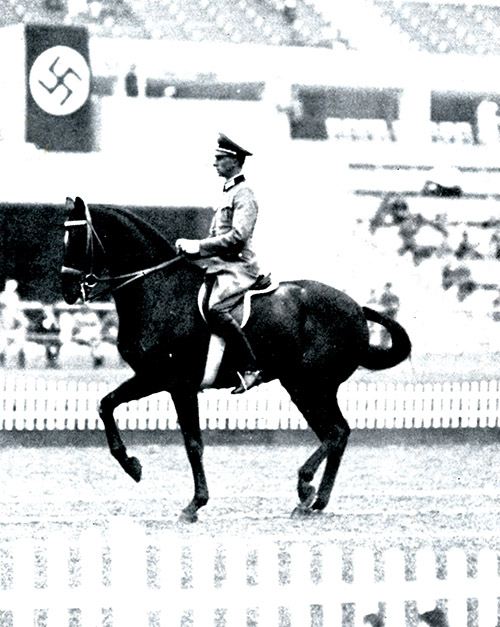
Pollay and Kronos in Piaffe. Rau notes: This performance can be called a perfect Piaffe. Kronos shows plenty of suppleness. He trots on the spot. A wonder of equilibrium. He is doing his task on invisible aids of his excellently sitting rider.
Pollay was placed first with the French judge, General Decarpentry, first with the German, General von Poseck, fourth with Sweden’s Baron von Cederström and Austria’s von Henikstein, and fifth with the Dutch judge, van Ulford.
Five judges for the first time, and they all sat together at a long table on the short side opposite the rider’s entrance. For the first time, coefficients were used, but this caused some controversy since “chauvinistic judges skillfully awarded higher scores to the riders of their own country when there was a high coefficient and lower ones to those competitors who might become dangerous rivals. In justifying themselves they might point out that they had given high marks, too, to the great adversaries of their nation.”
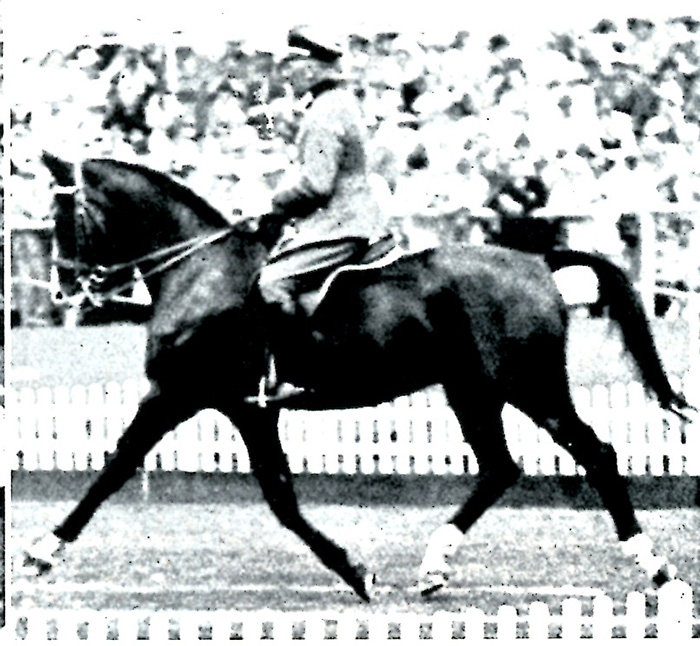
Second place to another German, Major F Gerhard and Absinth. Rau – ‘Brought to the maximum extension’. Gerhard was placed second with the German judge, third with the Swedes and the Dutchman, and seventh with the French judge.
The rider’s final score was determined not by adding up the individual marks of each judge, but by totaling where each judge had placed the combination to find the overall ranking. It was also announced that after the Berlin Games, the highest and the lowest scores would be dropped. Fancy!
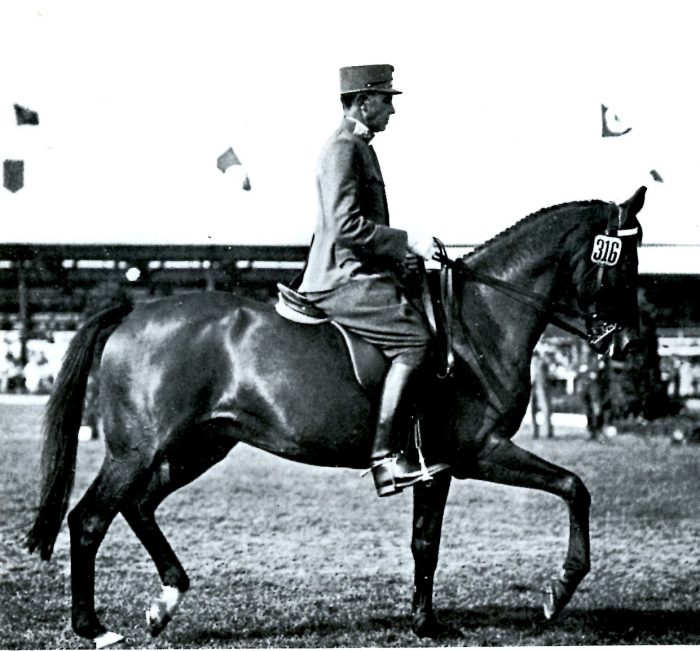
Bronze to the man himself, Alois Podhajsky riding Nero. Fifth with the Swede, fourth with the Frenchman, first with the Austrian, seventh with the German and second with the Dutchman.
more follows
And guess what, judges are influenced by the nationality of the riders:
“In Berlin, every one of the five judges had one or more compatriots among the competitors. Three judges placed their countrymen first, three placed them second. One rider who was placed second by his fellow countryman but ranked seventeenth, twentieth and twice in the twenty-first place in the scores of the four other judges. This was in a group of twenty-nine contestants from eleven nations! Any further comment is superfluous.”
Col. Podhajsky does not name names but a detailed break down of the scores in Gustav Rau’s Die Reitkunst and de Olympischen Spielen 1936, reveals that the offending judge is Sweden’s Baron von Cederström, and combination thus favored, Pergola and Hauptmann F Sandström.
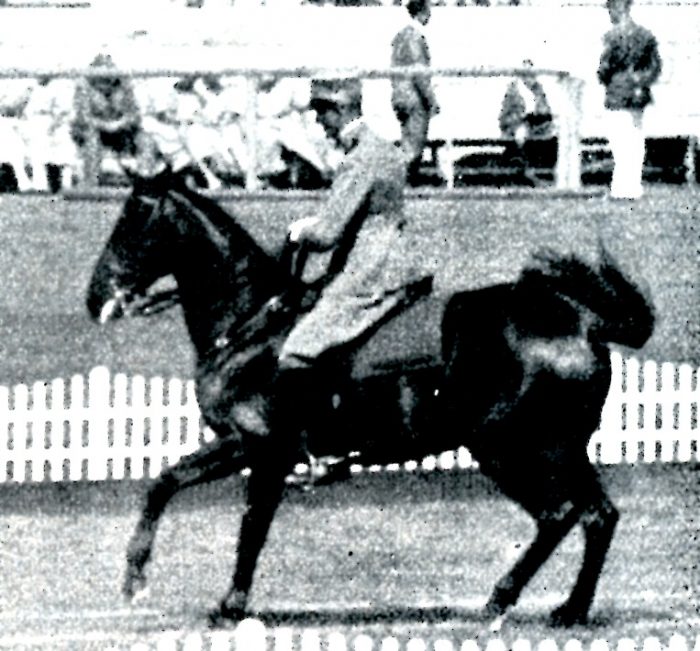
Remind you of anyone? Pergola at the 1936 Games
It would seem that the desire to dumb down equestrian sport has a long history:
“The equestrian standard had sunk to an alarmingly low level as a result of the war. In Berlin in 1936 the horses had not only performed the most difficult exercises brilliantly but had also excelled in the regularity and harmony of all paces. In London, none of this was to be seen although the test had been made considerably easier by eliminating piaffe and passage. And what followed? The subterfuge of a ‘modern concept’ was invented, the ideal of which was presumably to have horses that jogged along without regularity and cadence.”
But the problems with the judges would not go away:
“The jury was reduced to three judges. Two of them placed their compatriots first and second. The third judge had only one rider from his nation and he gave him first place by awarding scores out of all proportion. One rider who had been placed second by his compatriot was put in eighth and tenth places in a field of nineteen riders from nine nations by the two other judges.”
“It was hard to understand why the number of judges was reduced from five to three. A larger jury would have in any case guaranteed a more impartial judgement. A grotesque explanation was given for eliminating place marks, namely that the system of deciding the winner by such marks was not applicable with a jury of three judges. This decision, which was made public at the very last moment, in fact gave one of the judges the chance to give the gold medal to his compatriot whose place mark was nine, while a better rider with the place mark eight had to content himself with the bronze medal.”
“There was great hue and cry and criticism. But the judges or the responsible organization had taken care to prevent all outsiders from having a glimpse behind the scenes. Against all laws of fairness the names of the judges remained a secret even for many months after the Games and in the lists and official reports were supplanted by A, B and C.”
Dressage was on an upward swing by the time the action swung to Helsinki:
“At the 1952 Olympics the Grand Prix was again raised to the level of Olympic standards by reintroducing piaffe and passage, the test was judged by a jury of five, with the highest and lowest scores dropped. Consequently, the scores of three judges only counted for the final results. The place marks were not taken into consideration and have not been reintroduced since. Instead, after each ride the judges compared the marks they had given for the different groups of exercises in the test. The scores had to be corrected in case of a difference exceeding four marks. The test sheet provided a special column for these corrections. As a logical consequence to this procedure, the judge with the greatest experience and knowledge but also with an overpowering personality forced his opinion upon the other members of the jury. Moreover, weak and uncertain judges by wavering between the indifferent marks four to seven, escaped having to stand up for their evaluations to the president of the jury. All in all, this was certainly not a satisfactory solution of the problem.”
“Again the scores of the judges were unfortunately revealed to be of doubtful value. Three of the five judges had compatriots to evaluate and promptly placed them first, although with the other judges they landed in the ninth, eleventh and nineteenth places. Two judges awarded the second place to their fellow countrymen, one of whom placed twentieth with one of the other judges, and that in a field of twenty-seven competitors from ten nations!”

For the 1956 Games, when the equestrian events were held in Stockholm, the test was made more difficult:
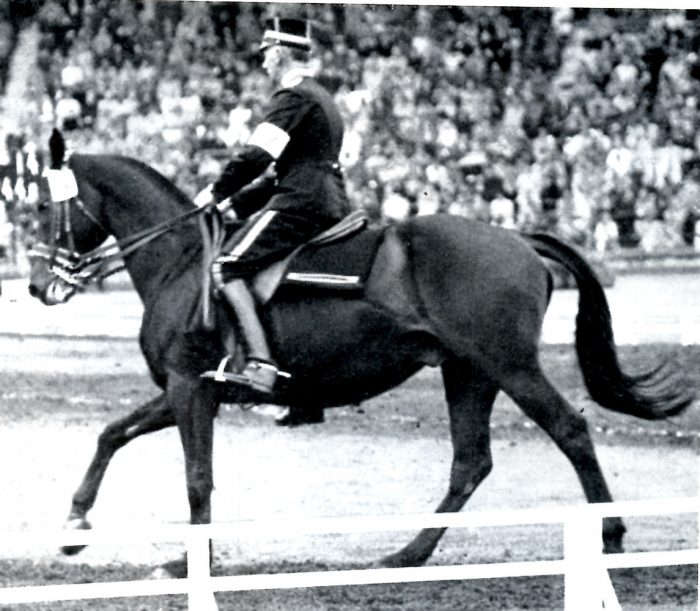
Gold at Stockholm for Henri St Cyr and Juli, for Sweden
“There were flying changes on the circle, for instance, beginning with two four-time changes, decreasing to two changes after each stride, and increasing again to two changes after four strides. This exercise on the circle was highly criticised by some riders who called it a circus trick. However, its performance should be no problem for any dressage horse schooled by the principles of classical equitation, possessing sufficient balance and suppleness, and taking a perfect contact with the bit.”
Guess what? DRESSAGE WAS ABOUT TO BE ELIMINATED FROM THE GAMES! (no we are not talking about the year 2017, we are back in 1956…)
“The behaviour of the jury was in flagrant contradiction to the positive efforts of the organizers. Two of the five judges had no countrymen competing in this test. Two of the other judges considered for medals only their own compatriots, whom they placed first, second, and third, while with the other judges their scores did not amount to more than the eighth, fifteenth, nineteenth, and twenty third places. Most aggravating of all, this happened although for the first time the judges had sworn the Olympic oath for fair and impartial judging! The fifth judge awarded the first place to a contestant from his country while he placed the two other compatriots somewhere in the middle of a field of thirty-six riders from seventeen nations.”
“These incidents at the dressage test in Stockholm aroused general indignation, so much so that the International Olympic Committee was about to eliminate the dressage test altogether from the Olympic Games, an idea that had been considered for some time. Due to the initiative of the president of the Federation Equestre Internationale, H.R.H. Prince Bernhard of the Netherlands, it was possible to ward off this serious blow to the art of riding. Energetic measures were taken on one side and on the other there was readiness to compromise. The two guiltiest dressage judges were barred for life from any further international activity, and each nation was allowed to delegate only two riders to the Olympics in Rome, thereby eliminating any team medals.”
So how did we go in Rome?
“The dressage test was somewhat altered and the time allowed was twelve minutes. Thirty-three groups of exercises had to be evaluated. As an innovation the following Collective Marks were introduced, which at the end of the ride were also to be scored by ten to zero. 1. Paces (regularity and freedom) 2. Impulsion 3. Submission, suppleness, and lightness of the horse 4. Position, seat of the rider, correct use of the aids.”
“To a limited degree the coefficients were reintroduced, that is, the coefficient 2 in seven groups of exercises, including practically all of the airs of the Haute Ecole such as piaffe, pirouettes, and half pass at the canter. The coefficient 3 was awarded for flying changes at the canter at every stride, for the lightness of the horse, and for the rider’s seat and use of the aids. One coefficient of 4 was administered for the Collective Mark given for regularity and freedom of the paces.”
“Another innovation was the ride-off in which 25 per cent of the highest placed riders rode the test for a second time. The final result was deducted from the sum of the scores of both tests. Moreover, films were made of each rider and consulted by the judges before deciding the scores in order to correct their marks if necessary.”
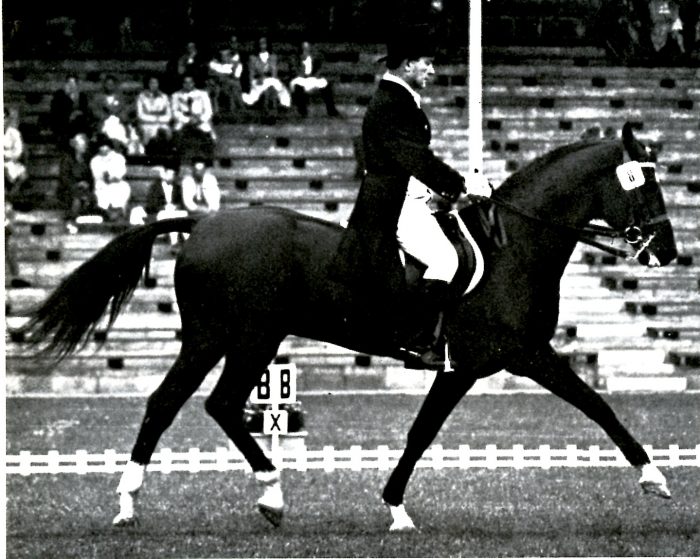
Gold in Rome to the Russian Sergej Filatow and Absent
“This was a rather complicated procedure in theory and in practice it had disastrous consequences. The equestrian standard was of no extraordinary level to begin with. In addition, due to the small entry of only seventeen competitors in an Olympic event together with the complicated system of judging, the interest of the public died down alarmingly. During the test the otherwise overcrowded grandstands began to thin out. The last riders presented their horses in front of rows of empty seats. The results were not published until four days later. This retarded publication and the placements, which were incomprehensible to the experts and to most persons interested in the Grand Prix de Dressage, caused a great deal of justified criticism in the international press.”
“In these Olympic Games three judges assessed the work of years of the best international dressage riders. They came from countries that had not delegated any contestants to the Grand Prix de Dressage. The entire system of judging was surrounded by incredible anonymity. By roundabout means, it was heard that in a special conference the judges consulted films made for that purpose before deciding the final places of the riders. No wonder that the definite results were not made known until four days later. It was a hopeless system which had no place in Olympic Games.”
“Another innovation was the side judge, who, as an observer, was to advise the jury from his point of view whenever disagreements arose. However, he was not authorized to give scores. But again this was not a satisfactory solution to the problem. Nevertheless, the office of the side judge was maintained up to the Games of 1968.”
At the Tokyo Games of 1964, the Grand Prix de Dressage was contested by nine nations (Argentina, Canada, Germany, Great Britain, Japan, Sweden, Switzerland, the U.S.A., and the U.S.S.R.) with six teams of three riders and four individual riders, altogether 22 riders. The individual winners were: 1. Chammartin (Switzerland) on Woermann 2. Boldt (Germany) on Remus 3. Filatow (U.S.S.R.) on Absent. The team medals were won by 1. Germany, 2. Switzerland, 3. U.S.S.R.
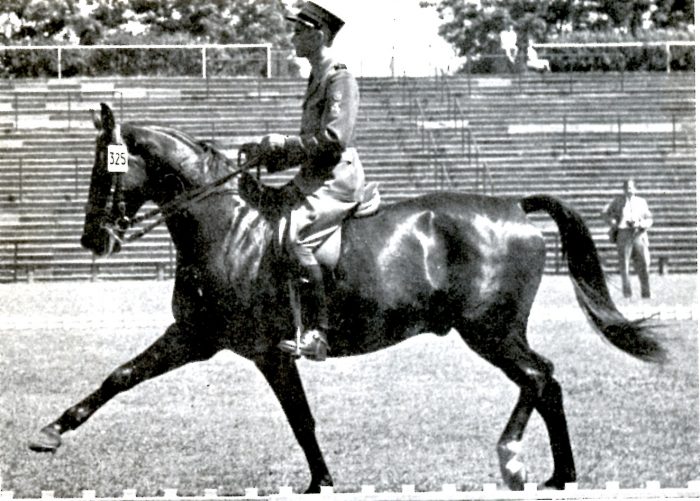
Gold in Tokyo to Henri Chammartin and Woermann – seems spectacular in front,
out behind has been around for a while…
“The jury consisted of three judges. Separated from each other, they were to evaluate thirty-two groups of exercises with marks from ten to zero. Again the scores were examined by the president of the jury, who ordered them to be corrected if the comparison revealed gross divergences. The four Collective Marks, three of which were multiplied by the coefficient 2 and one by 3, were determined by the group. Corrections in the test sheets and the final marks given collectively more or less annulled the idea of separate judging. In a ride-off the judges evaluated the better 25 per cent of the participants for a second time. The scores of both rides were added up to determine the final results and the winners of the individual medals. The side judge was again an observer without a vote. The same system was maintained in Mexico in 1968.”
“Since in Tokyo, too, the judges saw films made of each rider before making a final decision, the publication of the results was delayed by days. Again it was a rather un-Olympic procedure. Because of the distance of the Games from my homeland, I could not be present and form a personal opinion. It was not easy to obtain an unbiased over-all view from the various contradicting reports. They were either full of praise, especially about the performances of the reporter’s own countrymen, or full of severe criticism, particularly of the dangerous opponents from other nations.”
“In Tokyo, only one of the judges had to assess his own compatriots. He was straightforward and unbiased, for he placed them seventh, tenth, and twentieth in a field of twenty-two riders from nine nations. A judge should not be expected to rate the riders of his own country with extreme severity in order to prove his impartiality. However, the correctness of this particular judge’s opinion was confirmed by the verdicts of the other members of the jury.”
On to Mexico and the Games of 1968.
Nine nations took part in the Dressage – Canada, Chile, Democratic Republic of Germany, Federal Republic of Germany, Great Britain, Mexico, Switzerland, the U.S.A., and the U.S.S.R. – with eight teams of three riders and two individual riders, that is, twenty-six riders, participated in the Grand Prix de Dressage.
The individual medals were won by: 1.Kisimov (U.S.S.R.) on Ikhor, 2. Neckermann (F.R.G.) on Mariano, 3. Klimke (F.R.G.) on Dux.
The team medals went to: 1. F.R.G., 2. U.S.S.R., 3. Switzerland.
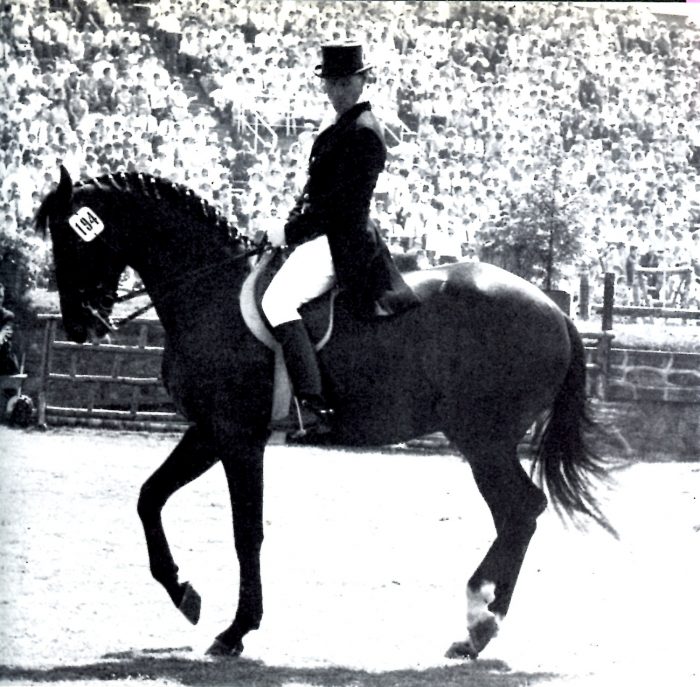
Gold in Mexico for Iwan Kisimov and Ikhor
“The test of the Grand Prix had undergone few changes and consisted of the principal test with thirty-three groups of exercises and the ride-off with twenty-three groups of exercises, as well as the four Collective Marks at the end of each test. Immediately after the principal test the winning teams were determined and the medals awarded. The best 25 per cent of the participants of the principal test was summoned for a ride-off two days later. The sum of the scores of both tests decided the winner of the individual medals.”
“The jury consisted of three judges placed on the short side of the arena opposite the rider’s entrance and of one side judge. After completion of each ride all judges assembled at the stand of the president of the jury and compared their scores. Any considerable divergences were corrected. All four judges together then decided the four Collective Marks, which since 1960 have been part of the scores.”
“Only one of the judges was to judge his fellow countrymen, whom he placed eighteenth, twentieth, and twenty-first.”
“There was extraordinary interest in the Grand Prix de Dressage as evidenced by the crowded grandstands. Unfortunately, the comparison of scores and the determination of the Collective Marks for which the judges met together after each ride took at least as much time as the presentation of the test itself -sometimes as long as half an hour. No wonder that the initially enthusiastic public lost the over-all view since it became impossible to compare the actual presentation of a rider with the final result of his scores. Consequently, the grandstands emptied rather rapidly, as had happened in Rome.”
“When it became known that some of the judges had to correct up to seventeen marks out of thirty-three in the test sheets of one and the same rider, the criticism of the judging system heightened in equestrian circles and also in the hippological press in most countries. I myself had the opportunity to see the three test sheets of one rider. One judge had corrected seven of his marks by adding one or two; another judge by deducting one to three. With such incidents it is certainly not possible to speak about a uniform conception which in fact should be expected in a jury elected by the FEI and subordinate to its regulations. Such abuses did not fail to arouse the FEI, and there were numerous attempts to remedy the system of judging by introducing various changes, which, however, did not always meet expectations.”
Why are we not surprised?
Almost half of Podhajsky’s book was devoted to the Munich Games, no doubt because these were the freshest in his mind – and he had taped his comments on the rides at the time.
Thirteen nations – Brazil, Canada, Denmark, Democratic Republic of Germany, Federal Republic of Germany, France, Great Britain, Japan, Netherlands, Sweden, Switzerland, the U.S.A., and the U.S.S.R. – competed in the dressage at Munich, with ten teams of three riders and three individual riders, competed in the Grand Prix de Dressage.
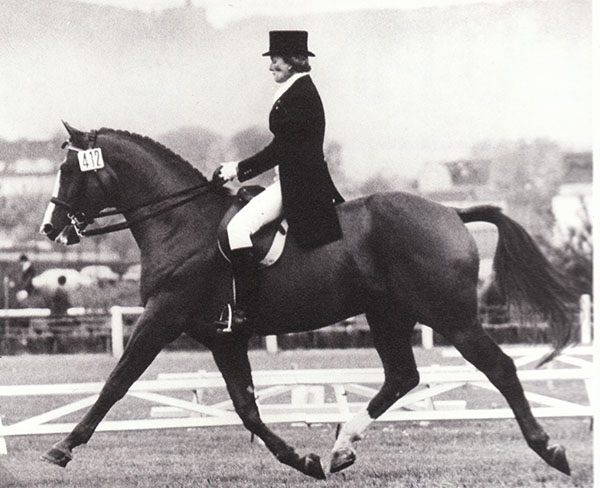
Gold in Munich for Liselott Lindsenhoff and Piaff
The individual medals were won by: 1. Liselott Linsenhoff (F.R.G) on Piaff, 2.. Elena Petuschkowa (U.S.S.R.) on Pepel, 3. Josef Neckermann (F.R.G.) on Venetia
The team medals were awarded to1. U.S.S.R., 2. 2 F.R.G., 3. Sweden.
Again the dressage competition consisted of a principal test and a ride-off. In the principal test the winners of the team medals were determined and the better third of the participants qualified for the ride-off. The time allowed for the principal test was ten minutes. Thirty-eight groups of exercises were to be scored, and four Collective Marks were to be awarded after each rider had finished his presentation.
The ride-off included twenty-four groups of exercises and the same four Collective Marks as in the principal test. The time allowed was seven minutes.
The coefficient 2 was employed to multiply the marks for both pirouettes at the canter and the four Collective Marks, that is, there were altogether six coefficients of equal value.
Podhajsky then under-took an in-depth review of the Grand Prix test:
I make no apologies for the length of this extract, it is a fascinating insight into the thinking of one of the dressage ‘greats’, in fact, if you are really obsessive click here and you will find the test sheets that you can print and compare with the Colonel’s remarks…
“In a dressage test the rider should be given the opportunity to display his and his horse’s abilities. For the judge it is important to gain a clear picture of what is presented in the test. He should form his opinion and find out the reason for faults that occur during the ride. Furthermore, the programme of a test should be laid out with beauty and harmony and correspond to the principles of classical horsemanship. The author or authors of the principal test satisfactorily met the requirements and did justice to the concept of classical equitation.”
“The beginning of the test distinguished itself by a logical structure offering the rider a chance to present the pure paces of his horse with distinct differences of tempo or speed as the horse moved straight forward with impulsion. Impulsion and suppleness in the collected paces present a beautiful sight in which riding approaches the realm of art. Frequent changes of tempo are the best way to achieve the gymnastic training of the horse and at the same time give proof of exactly that gymnastic schooling.”
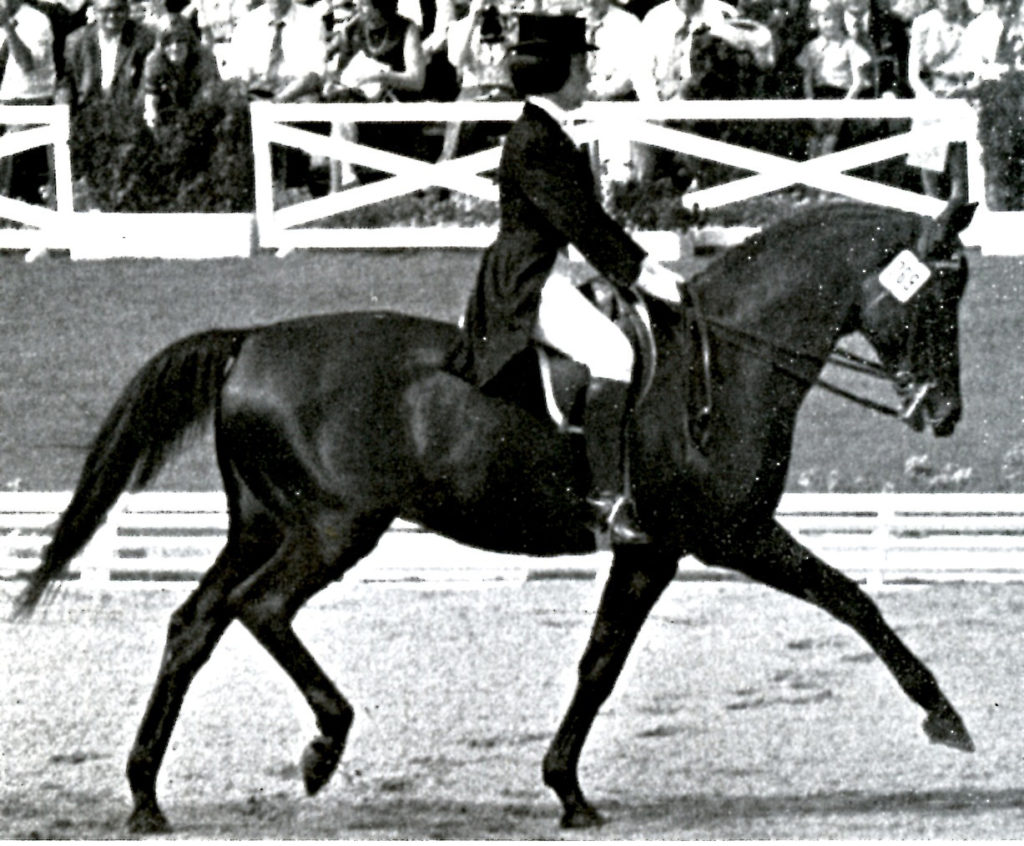
Silver to Elena Petuschkowa on Pepel
“Significantly, one of only three coefficients is attributed to the extended walk, and the walk in the different speeds is to be scored three times. This gives proof of concept and system in the construction of this test, for the walk more than the other paces reveals the correctness of training.”
“After the harmonious structure of the beginning the observer is disappointed by the way the two half pirouettes at the walk are laid out. These exercises are not well presented. When the distances for the turn is deducted there remains a stretch of not more than sixteen metres for the two of them. Besides, it seems illogical to award to these short exercises alone three of the total of thirty eight marks.”
“The sport of dressage advocates the classical principles of horsemanship, which proclaim the preservation of the horse’s natural movements. From this point of view the lay-out of the passage is incomprehensible. For three passages interrupted by two piaffes the rider has a distance of ninety-six metres complicated by six turns of ninety degrees. Here dressage perilously approaches circus riding. The passage, which in nature derives from a not fully released urge to go forward, consequently becomes an unaesthetic movement full of tenseness. This was clearly seen with most riders and stands in gross contrast to the promising beginning of the test.”
“The extended canter, on the other hand, is very logically required before the two pirouettes on the center line. Here the rider has a chance to produce sufficient impulsion in his horse to guarantee the performance of an elastic, rhythmic pirouette. The observer misses the exercises of riding with the reins in one hand and of giving the reins completely, preferably at the canter. These would contribute considerably to rounding off the over-all evaluation of horse and rider, as they are visible proof of absolute balance and of full harmony between the creatures. Furthermore, they would underline that the sport of competitive dressage naturally develops from basic general horsemanship and must never be anything like circus riding.”
“By means of the ride-off the individual medalists were selected among those competitors who qualified for it in the principal test. Since the scores of the principal test no longer count for the final evaluation, it is necessary and correct to demand again, in a different routine, the exercises that best reveal the basic training of the horse. In this respect the beginning of the ride-off is logically constructed. With a great variety of work at the trot the rider is offered a good opportunity to present his horse’s impulsion and perfect balance, especially when riding through the comers of the arena at the extended trot. Changes of tempo rapidly alternating in short distances are the criterion for a sound foundation of schooling to be expected in a dressage horse of Olympic standard.”
“I regret to say that in this exercise most riders displayed the horse’s inability to produce a true extended trot immediately followed by a vivid and supple collected one – the fortissimo and the pianissimo of riding.”
“Without consulting the programme of the test it was often difficult for the observer to find out what the rider was trying to perform. The brilliance of this exercise was too often lost in the indistinguishable uniform tempo in which it was presented. The periods of passage and piaffe were again to be ridden in the same unattractive bends and turns which had already interfered with the smooth continuation of movement in the principal test.”
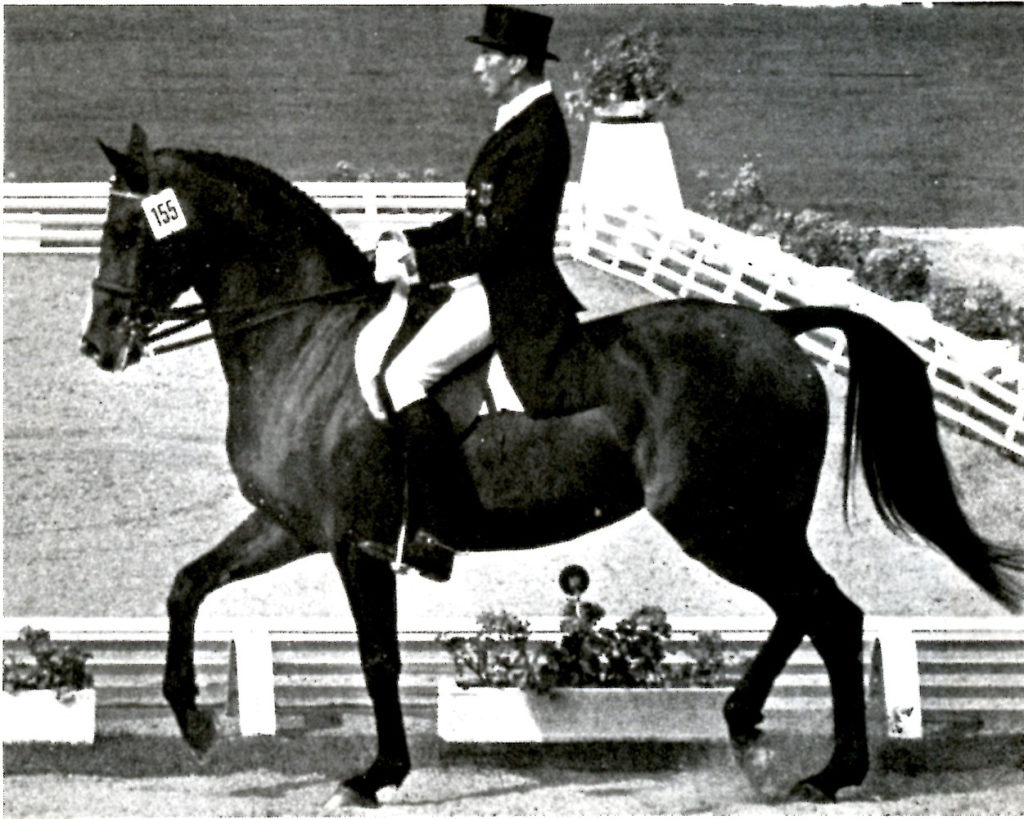
Josef Neckermann on Venetia – bronze
“In both tests the harmonious flow of the different movements was encumbered by all sorts of kinks and curls, just as the rapid sequence of some exercises confused certain riders and hampered their performance. Consequently, watching thirty-three riders going through the test sometimes became tedious for even the most interested observer.”
“This may be the explanation for the spontaneous applause with which the public received the British dressage rider Mrs. Lorna Johnstone on El Farruco. It was certainly prompted less by respect for the old lady than by the pleasure and relief after hours of watching the test to see at last a rider demonstrate distinct changes of speed and sportsmanlike impulsion.”
“The jury consisted of five judges who were strictly separated from each other. They had to form their opinions in total seclusion and dictate their evaluations, along with short remarks, if necessary, to their secretaries. After each ride the completed test sheets were taken to the scoring office. In the shortest possible time the results were evaluated and listed on the score board for everyone to see.”
“The course of the Grand Prix unwound swiftly and the schedule was generally observed, which was a pleasant contrast to the endless conferences between the rides at the Grand Prix in Mexico in 1968. The members of the jury were presided over by Colonel Nyblaeus (Sweden) here named Judge C, who was seated at the center of the short side. General de Breuil (France), on the short side at the president’s left, is named Judge M. Mr. Herrera (Mexico) on the short side at the president’s right is Judge H. Colonel Pollay {F.R.G.), at the center of the long side to the left, is Judge E. Mr. Pot (Netherlands), at the center of the long side to the left, is Judge B.”
“In the principal test the judges classified riders of their own nation as follows (the final placing is given in parentheses) :
Judge C (Sweden) Hakansson 331 marks on place 2 (5)
Swaab 316 marks on place 7 (7)
von Rosen 313 marks on place 9 ( 11)
Judge M (France) Le Rolland 306 marks on place 20 (23)
Judge E ( F.R.G.) Linsenhoff 368 marks on place 1 (1)
Neckermann 350 marks on place 2 (3)
Schlüter 319 marks on place 9 (9)
Judge B (Dutch) van Doome 305 marks on place 17 (18)
Benedictus 301 marks on place 21 (27)
Swaab 210 marks on place 27 (28)
In the ride-off the judges scored:
Judge C (Sweden) Hakansson 226 marks on place 2 (6)
von Rosen 215 marks on place 6 ( 8)
Swaab 210 marks on place 8 ( 10)
Judge E ( F.R.G.) Linsenhoff 254 marks on place 1 (1)
Neckermann 247 marks on place 2 ·(3)
Schlüter 233 marks on place 3 ( 7)
Podhasky sums up:
“And now a few comments about the method of judging and the judges themselves, whose performance was criticised by the press of practically all competing nations.”
“We have already discussed the development of and the attempts to improve the system of judging during the sixty years since the inclusion of this branch of the sport in the Olympic Games. In Munich, at last, the long-time demand made by equestrian circles was granted. The judges were no longer to compare and to correct the results of their marks before the publication of the scores, dragging out the time of the dressage competition by long-winded discussions. They were to announce their evaluations immediately after the scores had been added. Thus each judge was openly taking the responsibility for his judging.”
“However, the term “system of open judging” is pertinent to a limited degree only. For at best it was possible for a rider to consult his own score sheets but none of the others, which would reveal how the individual marks produced the final result.”
It was still nationalistic and judging that is difficult to follow:
“For six riders the difference between the highest and the lowest place marks given by the different judges is from two to four places. Such differences might be tolerated considering the numerous groups of exercises to be judged. This tolerance, however, is no longer admissible for those cases in which the difference amounts to six and seven places, as occurred with three riders, and to eight places as with four riders. Moreover, two riders were respectively scored with differences of nine and eleven places, and for one rider differences amounted to fourteen, sixteen, twenty, twenty-one, and twenty-two places. In the face of such facts it is difficult to speak about a uniform concept of dressage riding among the judges in Munich.”
“When comparing the sum of the marks, the contrasts do not become so obvious at first sight. They leap to the eye, however, when ranging the riders according to their place marks. Of course, the individual judge’s score sheet for one rider may very well differ from the same rider’s score sheets from the other judges. After all, there is a choice of scores. Good performances may be rewarded by ten to eight marks, sufficient ones by seven to five, and insufficient ones by four to one. As a result, a severe evaluation is never of disadvantage when determining the winner according to place marks, provided, of course, that all riders are judged in the same manner and in just relation to each other. No allowance should be made for riders of one’s own country or for friends, nor should opponents of one’s countrymen or riders who do not appeal to the judge be judged differently.”
“It is a vital part of the judge’s character that he does not allow himself to be influenced in any way in his judging but puts his entire knowledge and understanding into the cause. Chauvinism, from which we have unfortunately not yet freed ourselves, is just as objectionable as lack of knowledge or the inability to express an opinion of one’s own. A judge of that kind should have no place in small national horse shows and certainly none at an event such as the Olympic Games. Not only the experts but also other attentive observers were struck by the large differences in the evaluations of the dressage riders in Munich.”
“Part of the press, as an excuse, pointed out that the judges placed on the short side of the dressage arena had a different field of vision than those seated on the long sides. Fundamentally, this statement is correct. The judge seated at the front of the arena may see many things better than the judge seated at the side. On the other hand, the judges placed on the sides have a better view than the rest of the judges of many faults that may occur during the frequent turns from one long side of the arena to the other required in this test.”
“However, the comparison of results I have charted clearly shows that the serious differences in place marks were to be found among the three judges placed on the short sides of the arena. Here the difference between the highest and the lowest place marks was of: 0 to 4 places with 13 riders, 5 places with 1 rider, 6 places with 4 riders, 7 places with 3 riders, 8 places with 2 riders, 9 places with 3 riders, 10 places with 2 riders and with one rider respectively 11, 12, 13, 14, and 22 places.”
“With the two judges seated at the long sides of the arena, the difference in the place marks was of: 0 to 4 places with 22 riders, 5 places with 3 riders, 6 places with 1 rider, 7 places with 4 riders and with 1 rider respectively, 8, 11, and 12 places.”
“Indeed as already remarked, it is sometimes very difficult for a judge to evaluate with justice if the performances of the riders are of a low standard. It is even more difficult to place the riders correctly if there are thirty or more on an equal level. The conscientious judge would admit that it is practically impossible to be absolutely just in his evaluation even with the utmost impartiality when he sees so large a number of riders in only one test. He should therefore welcome the opportunity to see the riders a second time, as is the case now in the ride-off.”
“When studying the names of the judges who composed the juries of the Grand Prix de Dressage at the Olympic Games in the past decades it is with surprise and consternation that one notes that quite a few of them were never dressage riders and cannot boast of any achievements in this sphere, such as winning trophies or being outstanding as teachers. When there is a music contest of any international importance nowadays, nobody totally unknown in this field would be called into the jury.”
Let’s see what happens in Tokyo…
Want to breed a modern star for the dressage arena? International Horse Breeders have the best bloodlines in Australia:www.ihb.com.au

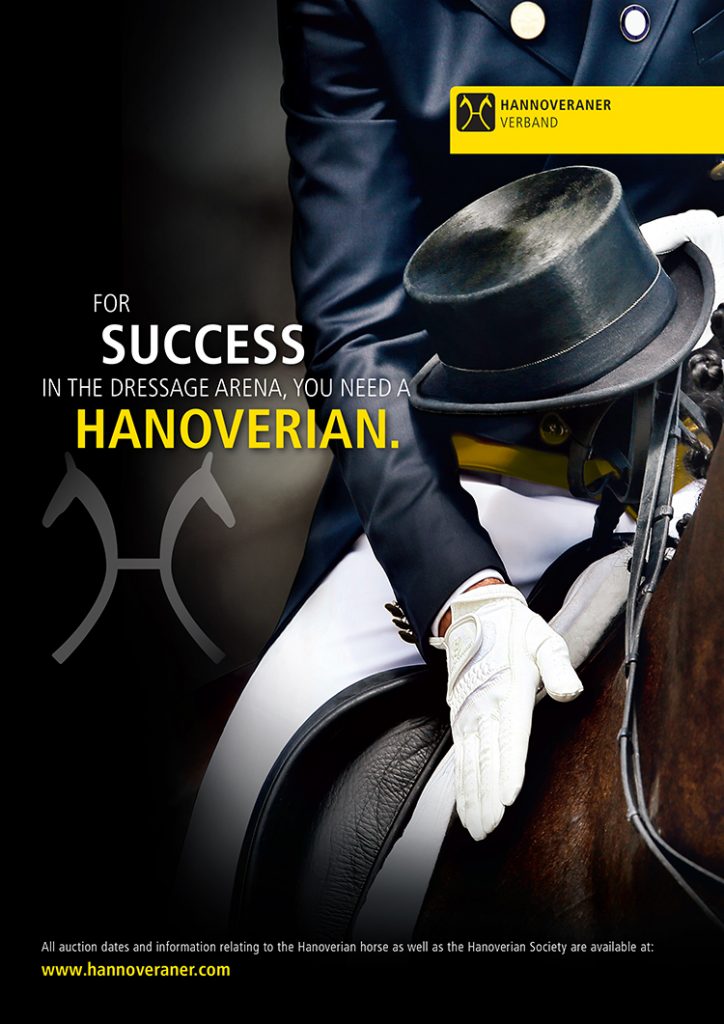
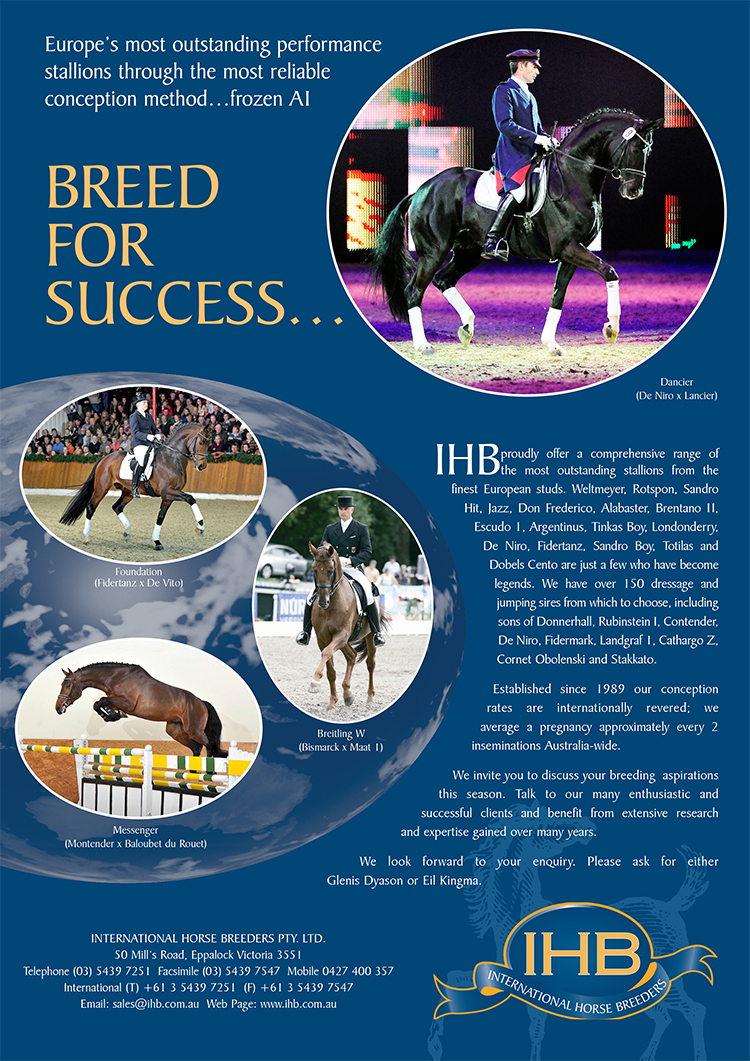
Very noticeable that all but one of these horses do NOT have the “broken Neck’ position, like the poorly trained horses do these days. They are POLL high.
jwa74464@bigpond.net.au
thank you, i enjoy reading this.